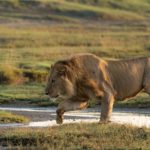With over 1,100 bird species, Tanzania is a paradise for avian enthusiasts and professionals alike. The Serengeti alone hosts more than 500 species, making it a prime location for witnessing remarkable avian diversity. Have you ever marveled at the sight of flamingos painting the sky pink over Lake Natron?
Birdwatching in Tanzania is bolstered by the country’s rich biosphere and diverse ecosystems. From the montane forests of the Usambara Mountains to the vast wetlands of the Selous Game Reserve, every habitat provides unique birding opportunities. Notably, some rare species are endemic, such as the Udzungwa forest-partridge, making these locations even more significant for species conservation efforts.

Birdwatching in Tanzania: Best Spots for Avian Enthusiasts
Birdwatching in Tanzania offers a unique opportunity to observe a wide variety of bird species in their natural habitats. The Serengeti National Park is one of the best spots for birdwatching, especially during the migration season. This park hosts over 500 bird species, making it a top destination for avian enthusiasts. Its diverse habitats, ranging from open grasslands to riverine forests, attract different bird species. Make sure to bring a good pair of binoculars and a field guide to enhance your experience.
Another excellent location for birdwatching in Tanzania is Arusha National Park. This park, nestled in the highlands, features a variety of ecosystems including montane forests and wetlands. Arusha National Park is home to more than 400 bird species. Some of the highlights include the Greater Flamingo and the rare Taveta Golden Weaver. Early morning and late afternoon are the best times to visit as bird activity peaks during these periods.
Lake Manyara National Park is famous for its spectacular waterbird population. Here, you can witness thousands of Lesser Flamingos, which create a pink hue across the lake. The park’s diverse habitats, including ground water forests and acacia woodlands, support more than 350 bird species. Birdwatchers can spot species like the Pink-backed Pelican and the Palm-nut Vulture. A boat or canoe trip on the lake can provide an even closer look at these magnificent birds.
For those planning a birdwatching tour, Rolux Safaris offers customized itineraries that cover the best birding spots in Tanzania. Their experienced guides are knowledgeable about the local avian species and their habitats. Tours can be tailored to include specific interests, such as photographing rare species or exploring different eco-regions. A well-planned birdwatching tour ensures you see the maximum number of species during your visit. Be sure to inquire about the best times of the year to visit for an optimal birdwatching experience.
1. Serengeti National Park: A Haven for Migratory Birds
Serengeti National Park, located in northern Tanzania, is a birdwatcher’s paradise with its vast grasslands and diverse habitats. The park is a major destination for migratory birds, making it an incredible spot for witnessing seasonal bird movements. From November to April, you can observe thousands of species such as the European Bee-eater and White Stork. The park’s rivers and wetlands also attract large flocks of waterbirds. Make sure to visit areas like Seronera and the Grumeti River for the best sightings.
One of the most fascinating aspects of birdwatching in the Serengeti is the sheer variety of species you can encounter. The park is home to more than 500 bird species, including both resident and migratory birds. Key species that attract avian enthusiasts include the Kori Bustard, Secretary Bird, and Fischer’s Lovebird. These birds can be seen in different habitats, from open savannas to wooded areas. Birdwatching tours are offered by Rolux Safaris to help you spot these magnificent creatures.
The Serengeti is not only known for its abundant birdlife but also for its breathtaking landscapes and other wildlife. While birdwatching, you might also see the Great Migration of wildebeest, zebras, and antelopes. This unique blend of birding and wildlife viewing makes the Serengeti an unparalleled destination. Early morning and late afternoon are particularly good times for birdwatching, as birds are most active during these periods. Always carry a good pair of binoculars and a bird guide to enhance your experience.
Here’s a quick list of must-see bird species in the Serengeti:
- Kori Bustard
- Secretary Bird
- Fischer’s Lovebird
- European Bee-eater
- White Stork
These species bring color and life to the Serengeti’s vast landscapes. Each birdwatching trip offers a new adventure, making it a rewarding experience for both novice and experienced birdwatchers. Rolux Safaris can customize your birdwatching itinerary to include these and many more unique species.
2. Arusha National Park: Diversity in the Highlands
Arusha National Park, located in the northern region of Tanzania, is renowned for its ecological diversity. The park features various landscapes such as montane forests, swamps, and savannas. Birdwatchers can encounter over 400 bird species here, making it a top destination for avian enthusiasts. Notable resident birds include the Crowned Eagle and the Rufous-tailed Weaver. The park’s varied ecosystems attract both resident and migratory birds throughout the year.
Within the park, the Ngurdoto Crater and Momella Lakes are prime birdwatching spots. The crater’s lush vegetation provides a habitat for forest birds like the Narina Trogon. Meanwhile, the lakes attract large flocks of waterbirds, such as flamingos and ducks. A list of birds frequently seen at Momella Lakes includes:
- Greater Flamingo
- Egyptian Goose
- African Jacana
- Hamerkop
- Pied Kingfisher
These birds create vibrant scenes around the water’s edge, making each observation unique.
The park’s highland climate makes it an ideal retreat for birdwatchers seeking a cooler environment. Arusha National Park is also known for its smaller crowds, providing a peaceful birdwatching experience. Trails and pathways lead you through different habitats, enhancing the chance to see various bird species. For a closer look, guided tours with Rolux Safaris are highly recommended. Their experts know the best spots and times for birdwatching within the park.
Tables can provide a quick glance at some of the key bird species seen in the park:
| Bird Species | Habitat |
|---|---|
| Crowned Eagle | Montane Forest |
| Greater Flamingo | Lakes |
| African Jacana | Swamps |
| Narina Trogon | Forest |
| Pied Kingfisher | Lakes and Rivers |
This diversity makes Arusha National Park an exciting place for birdwatching, offering encounters with both common and rare species alike. Plan your visit to maximize your birdwatching experiences.
3. Lake Manyara National Park: The Waterbird Spectacle
Lake Manyara National Park, situated in northern Tanzania, is famous for its incredible waterbird population. The park is home to over 350 bird species, with waterbirds being the main attraction. Thousands of Lesser Flamingos create a striking pink hue across the lake. The park’s diverse habitats, including underground forests and grassy floodplains, support a wide array of bird species. These amazing landscapes make Lake Manyara a top birdwatching destination.
During the rainy season, the lake is teeming with birdlife. Waterbirds like pelicans, storks, and cormorants are a common sight. Birdwatchers can also spot species such as the African Fish Eagle and the Saddle-billed Stork. Here’s a list of waterbird species you might see:
- Lesser Flamingo
- Great White Pelican
- Saddle-billed Stork
- African Fish Eagle
- Pink-backed Pelican
These birds add vibrant color and lively activity to the park’s serene landscape.
Beyond waterbirds, Lake Manyara National Park offers sightings of forest and savanna birds. Species like the Silvery-cheeked Hornbill and the Crowned Hornbill can be spotted among the dense forest canopy. The open savannas are home to the Lilac-breasted Roller and the White-browed Coucal. Birdwatching here provides a rich mix of both water and land birds in a relatively small area. This diversity makes each birdwatching trip uniquely rewarding.
Trail systems within the park allow for easy exploration and birdwatching. Birdwatchers can follow paths leading to prime observation points around the lake and within woodland areas. These paths provide close-up views of birds and other wildlife. The park’s design ensures minimal disturbances to the natural habitats, promoting healthy bird populations. Whether you are on foot or in a vehicle, the park offers brilliant birdwatching experiences.
A table listing some of the top waterbird and land bird species found in Lake Manyara National Park:
| Bird Species | Habitat |
|---|---|
| Lesser Flamingo | Lake |
| Great White Pelican | Lake |
| African Fish Eagle | Lake |
| Lilac-breasted Roller | Savanna |
| Silvery-cheeked Hornbill | Forest |
This mix of habitats and species highlights the park’s rich avian diversity. Birdwatching at Lake Manyara is a must-do for any bird enthusiast visiting Tanzania.
Why Tanzania is a Premier Birdwatching Destination
Tanzania stands out as a premier birdwatching destination due to its vast and diverse ecosystems. From coastal mangroves to highland forests, the country offers habitats for over 1,100 bird species. This incredible biodiversity attracts birdwatchers from all over the world. Wetlands, savannas, and mountain ranges each provide unique birding experiences. The country’s commitment to conservation ensures these habitats remain thriving ecosystems.
One reason birdwatching in Tanzania is exceptional is the number of endemic and near-endemic species. Some birds can only be seen in specific regions of Tanzania. Species like the Usambara weaver and the Uluguru bushshrike are found nowhere else. Tanzania’s varied terrains make this possible, supporting habitats for these rare species. Birdwatchers have a chance to see birds that are unique to the area.
The seasonal variations in Tanzania also contribute to its birdwatching appeal. During the wet season, many areas become lush and full of life, attracting migratory birds. This seasonal influx brings species from as far away as Europe and Asia. Some migratory birds you might see include the Common Sandpiper and the Northern Wheatear. These birds add to the already rich tapestry of bird life in Tanzania.
Another advantage of birdwatching in Tanzania is the presence of specialized birdwatching tours. Companies like Rolux Safaris offer tailored trips that focus on the best birding locations. These tours often include expert guides who know the habitats and behaviors of local bird species. Guided tours maximize the chance of spotting rare and interesting birds. Utilizing the knowledge of local guides makes for a more fulfilling birdwatching experience.
A table showcasing some of Tanzania’s diverse bird species and their habitats:
| Bird Species | Habitat |
|---|---|
| Usambara Weaver | Montane Forest |
| Uluguru Bushshrike | Montane Forest |
| Common Sandpiper | Wetlands |
| Northern Wheatear | Open Grasslands |
| Lappet-faced Vulture | Savanna |
These diverse habitats make Tanzania a must-visit destination for any birdwatching enthusiast. The richness and variety of Tanzania’s birdlife are unparalleled.
Planning Your Birdwatching Tour with Rolux Safaris
When planning your birdwatching tour in Tanzania, Rolux Safaris offers personalized itineraries to cater to your interests. Their experienced guides are experts in bird species and their habitats, ensuring that you have the best birdwatching experience. Tours can be arranged to cover various national parks and reserves. This flexibility allows you to witness the diverse birdlife Tanzania has to offer. From wetlands to forests, each habitat reveals unique avian species.
Rolux Safaris provides all necessary equipment to enhance your birdwatching journey. This includes high-quality binoculars and field guides to help identify different bird species. Knowledgeable guides offer insights into bird behaviors and migration patterns. They ensure that you are at the right place at the right time to spot rare species. Their expertise often leads to unforgettable birdwatching moments.
Birdwatching tours can be customized to include other activities as well. In addition to birdwatching, you might enjoy game drives or walking safaris. These activities offer a fuller experience of Tanzania’s natural beauty. A list of additional activities offered includes:
- Game drives
- Walking safaris
- Photography tours
- Cultural visits
Combining these activities with birdwatching makes for a well-rounded adventure.
Rolux Safaris also provides options based on the best seasons for birdwatching. For instance, the migratory period offers exceptional sightings of various bird species. Your itinerary can be tailored to coincide with these peak times. Planning your visit during these periods maximizes your chances of seeing the most birds. This strategic planning ensures a successful birdwatching tour.
A table can be helpful for quick reference to Rolux Safaris planning options:
| Planning Option | Description |
|---|---|
| Customized Itineraries | Tailored to your birdwatching interests and locations. |
| Provided Equipment | High-quality binoculars and field guides. |
| Expert Guides | Knowledgeable about bird species and habitats. |
| Additional Activities | Game drives, walking safaris, and cultural visits. |
| Seasonal Planning | Visits planned around peak birdwatching seasons. |
Rolux Safaris ensures a comprehensive and enjoyable birdwatching experience. With their expertise, your trip will be memorable and successful.
Key Takeaways
- Tanzania is a top destination for birdwatching.
- The Serengeti hosts over 500 bird species.
- Arusha National Park features around 400 avian species.
- Lake Manyara is famous for waterbirds like flamingos.
- Diverse habitats in Tanzania offer unique birding experiences.














